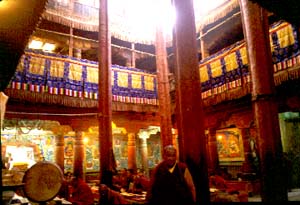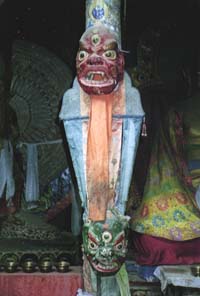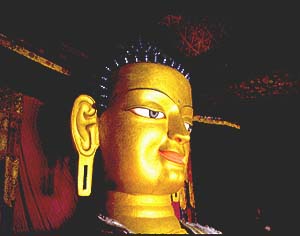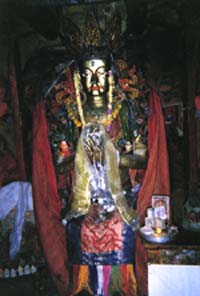The last component of our trip to "the land of high passes" : Ladakh. This area marks the boundary between the high mountains of the western Himalaya and the wide Tibetean Plateau. This region was closed to foreigners until 1974. It is a culture strikingly different than other regions of India-- being mainly Buddhist and with close cultural and trade associations with Tibet. Leh, in the Indus Valley, is the most populated area. Everywhere is evidence of Buddhist culture, from the impressive and sometimes isolated Gompas (Buddhist monasteries), to the ever present "prayer wheels" and "prayer flags."

In Ladakh I have known a society in which there is neither waste nor pollution,
a society in which crime is virtually non-existent, communities are healthy and strong,
and a teenage boy is never embarrassed to be gentle and affectionate with his mother
or grandmother. As that society begins to break down under the pressures of modernization,
the lessons are of relevance far beyond Ladakh itself.
--Helena Norberg-Hodge, Ancient Futures: Learning from Ladakh
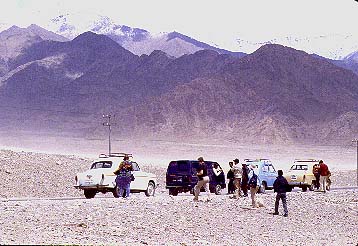
. . flat land, broiling sky, distance, and dust . . .
Ruth Prawer Jhabvala, Heat and Dust
The Gompas:
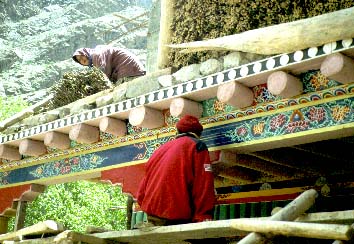
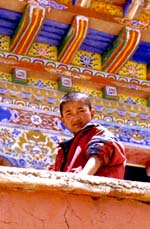
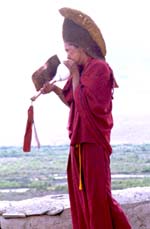

The closing of
of daily prayers is
performed from the
rooftop of the
monastery by
young monks.
Inside the Gompas there is a world of art that include paintings, architecture,
carvings, wall decorations, and music.